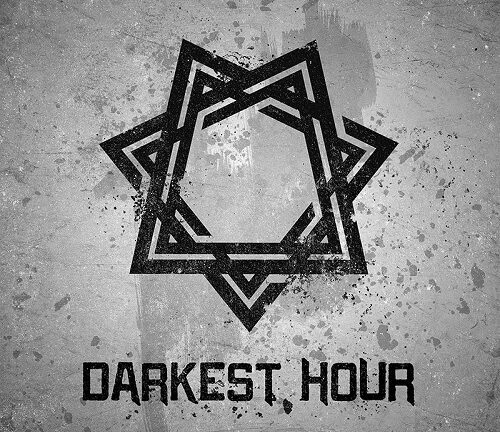Metalcore, as of late, is a very centralized genre – and I say that having been a huge fan of several bands in the genre. The main issue with the genre is its lack of real diversity aside from a select few bands that are able to create a different feel in the genre without ending up being labeled in other subgenres such as progressive metal, djent or deathcore. One such band, Darkest Hour, had used elements from thrash and power metal to make its sound a constant barrage of styles, yet maintain that metalcore label in a very successful and pleasant way. These veterans are back now with their self-titled album, a new drummer in ex-Periphery/Sky Eats Airplane’s Travis Orbin and a new feel under Sumerian Records.
The first thing I need to get out of the way with this album is that, if you’re a longtime fan of Darkest Hour, or even just a person who’s heard the band before this record, completely forget your old opinions because this record is a major sound change. The first track, “Wasteland,” is at least accessible for the old fans, as heavy and catchy riffs, excellent screaming and brilliantly thrashy drum parts are utilized. That being said, the catchier chorus is an omen of what’s to come, as clean vocals and hard rock guitar riffs make up nearly every chorus on the record. If I didn’t know better, some of the songs sound as though they were written by All That Remains during the Overcome days!
Two other songs of note on the first half of this 13-song record are “Rapture in Exile” and “The Great Oppressor,” which have more akin to the old Hidden Hands of a Sadist Nation days of the band, where there’s a lot of blast-beat and scream-driven short segments that circle pits were born from. The other four tracks from those I’d mentioned suffer from the same basic flaws: they’re uninspired and boring, and they do nothing for the album overall. “The Misery We Make” has a dull chorus with simple vocals, and the riffs during the verses feel almost empty at times. Once “Anti-Axis” comes along, I was actually ready to stop the record out of boredom – which is something I don’t think I’ve ever said about any of Darkest Hour’s work.
The second single from the record, “By the Starlight (featuring Draemings),” brings in the second half – and my restored hope in the band with it – because this song is a killer. It’s got a melodic opening with acoustic guitar, but it ascends into a remarkably heavy metal chorus for the ages. John Henry’s vocal style makes this song stand out beautifully, and the guest vocals Draemings provides give that melodic ambience to keep it accessible in a good way. The next track, “Lost for Life,” is another thrashy track with a well-done guitar solo to keep it interesting, and “The Goddess Figure” has a Phinehas feel to it, with an acoustic bridge bringing a little soft diversity to the track. The last few tracks sadly do little to progress the sound already introduced on the record, though “Hypatia Rising” (the longest track on the record) is of definite note for its catchy guitar work. As a fan of a lot of Darkest Hour’s work, to hear this album was a hard pill to swallow because it’s a large change to the band’s sound. At the same time, the progression feels more and more natural with each listen, and I can officially say this album is definitely a grower. Aside from a few weak tracks, it’s still worth a listen through, and the second half shines in comparison to its weaker beginning. I thought the band had pulled an All That Remains, but really, the members had just pulled a Darkest Hour.




